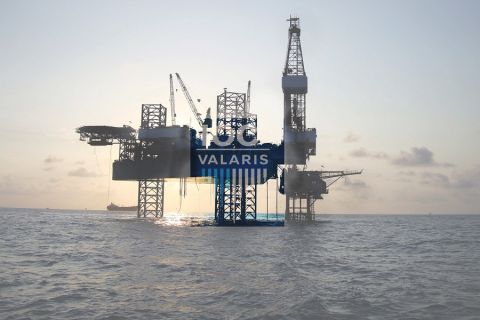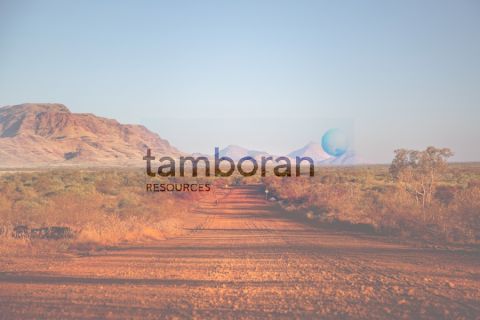More risk has been added to oil and gas exploration as the industry explores for more complex stratigraphic plays, deeper structural targets, and unconventional shale plays. Increasing environmental regulations add to the challenge. These issues collectively have pushed the technical envelope in all of the geosciences associated with the exploration effort, resulting in improvement in the overall success.
The 3-D seismic reflection technique, commercialized initially by Geophysical Services Inc. in the mid-1970s, was effectively an extension of the earlier 2-D technique. Ultimately, 3-D seismic had a major impact on the exploration and development success in all of the hydrocarbon basins of the world. The technique produced a 3-D view of the subsurface, providing geophysicists and geologists with a significantly clearer picture of both the stratigraphy and structure in the subsurface, which resulted in more accurate maps and the ability to detect direct hydrocarbon indicators. Three-D seismic was in fact the catalyst for the interactive interpretation workstation, where the increase in data from a 3-D seismic survey could be interpreted in a productive way, making the film/paper seismic section obsolete. After initial workstation teething troubles and retooling of the seismic interpreters, the workstation brought about a step-function increase in productivity, and a new class of geoscientist was born – the explorationist, with new tools at hand to consider different geologic scenarios associated with the targets.

A modern-day high-fidelity P-wave seismic cube over the Marcellus shale helps explorationists understand fracture networks. (Images courtesy of Geokinetics)
Processing
Shortfalls in the seismic acquisition method were rectified, in most cases in the processing stage of the seismic data. A classic issue was the “acquisition footprint” associated with land surveys – a pattern of artifacts in the data caused by irregular sampling of fold and offset. Although not completely removable in seismic processing, the patterns can be significantly attenuated. Today’s acquisition geometries are designed so that these artifacts can be greatly reduced. In the absence of footprint artifacts, more subtle information can be extracted from the seismic data such as detecting fracture trends using seismic anisotropy or seeing subtle structural and stratigraphic features using geometric attributes.
Acquisition
Improvements in 3-D seismic acquisition have been prolific over the last decade or two. Probably the most significant improvement has been in the productivity – the amount of time it takes to complete a 3-D survey. In the marine world this has been attributed to seismic vessels towing large numbers of streamers with multiple acoustic sources resulting in swaths of lines being recorded in a single pass. This has led to recording seismic lines much more closely spaced than with a single streamer – 12.5-m (41-ft) separation is not uncommon compared with 50 m (164 ft) for the earlier surveys. This close line spacing provides improved spatial resolution, which allows smaller features in the subsurface to be imaged.
Improved productivity and greater positioning accuracy helped stimulate the 4-D or time-lapse seismic market first attempted in the mid-1980s. Repeating 3-D surveys over time has proven to be a tremendous reservoir monitoring technique and allows bypassed reserves to be detected and produced.
The increased interest and success by oil companies in subsalt plays has brought about significant interest to improve imaging of salt interfaces and structures below the salt. Wide-azimuth seismic acquisition deploying multiple seismic source and recording vessels enables seismic waves to be recorded from multiple azimuths, allowing improved velocity control and superior data sampling of the subsurface. Improved velocity control is brought about by sampling the velocity in multiple azimuths and taking into account velocity anisotropy – velocity variations with the azimuthal recording direction caused by geologic heterogeneities. A new breed of depth migration processing algorithms has exploited this velocity anisotropy, which can put the seismic data in the correct position in the depth domain as opposed to the time domain where seismic data is recorded. This improves the focus of the final image and allows explorationists to produce more accurate interpretations. Taking this into account in processing can provide improved interpretations below the salt, improving exploration success by reducing the risk of an incorrect structure.
Land seismic
Land seismic acquisition productivity has dramatically increased over the last decade with the advent of literally thousands of available channels for a survey, enabling large areas of geophone arrays to be active on the ground at any time. This can improve sampling with consistency in both fold and offset, resulting in improved data quality. With this improved productivity and data quality, oil companies see the economic benefits in acquiring larger 3-D surveys to cover an increased area of their exploration acreage, leading to a broader understanding of the subsurface geology.
With large channel counts allowing more flexibility in the acquisition layout, surveys can be designed to focus on the important key components of the reservoir. The Marcellus shale is a classic example. It takes dedication to maintain a light environmental footprint in a region of pristine forests and sensitive ecosystem.

In a recent survey, Geokinetics was able to acquire 4,600 sq km (1,800 sq miles) of 3-D seismic incorporating a simultaneous three-component survey for calibration. The survey used a wide-azimuth acquisition layout resulting in 360-degree azimuths at the target Marcellus level. This was possible with computer-aided design and the flexibility to modify on the fly and maintain spatial integrity throughout the survey.
The processing team used techniques such as vector tile processing to maintain the azimuthal data after migration. The processed 3-D data allowed the Geokinetics Integrated Reservoir Geosciences Group to perform inversions to isolate the anisotropic shale responses attributed to fracture density and fracture direction that affect gas production. The team also was able to independently confirm these fracture networks using fast and slow shear measurements from the three-component survey and from well control. Integrated teamwork of this nature, from design and execution to evaluation, leads to a fundamental improvement in exploration success.
As the exploration landscape evolves and greater challenges arise, it is increasingly important to develop new tools to work in the world’s extreme environments. Geokinetics has developed onSEIS (weight drop source vehicles) and the Geokinetics Marine Vibrator to meet these challenges. For a recent large 3-D survey in the remote Eromanga Basin of Queensland’s interior of Australia, the company employed a fleet of track-mounted onSEIS vehicles to support the main vibrator source for the survey to record in areas covered by receding flood waters from excessive rains experienced in eastern Australia. The onSEIS source also was able to fill in areas that the Vibroseis units were unable to reach. This is a case where both experience and technology avoided a partially compromised survey, leading to improved results for the client.
Recommended Reading
Utility, Clean Energy Company Allete to Go Private in $6.2B Deal
2024-05-06 - The Minnesota-based utility said on May 6 it agreed to be acquired by a partnership led by Canada Pension Plan Investment Board and Global Infrastructure Partners.
Valaris’ 1Q Sets Positive Tone for Offshore
2024-05-06 - Coming out of first-quarter 2024, drilling contractor Valaris expects a sustained upcycle for the offshore drilling industry supported by demand growth, OPEC+ production cuts and supportive commodity prices.
U.S. Shale-catters to IPO Australian Shale Explorer on NYSE
2024-05-04 - Tamboran Resources Corp. is majority owned by Permian wildcatter Bryan Sheffield and chaired by Haynesville and Eagle Ford discovery co-leader Dick Stoneburner.
1Q24 Dividends Declared in the Week of April 29
2024-05-03 - With earnings season in full swing, upstream and midstream companies are declaring quarterly dividends. Here is a selection of dividends announced in the past week.
Analyst Questions Kimmeridge’s Character, Ben Dell Responds
2024-05-02 - The analyst said that “they don’t seem to be particularly good actors.” Ben Dell, Kimmeridge Energy Partners managing partner, told Hart Energy that “our reputation is unparalleled.”





